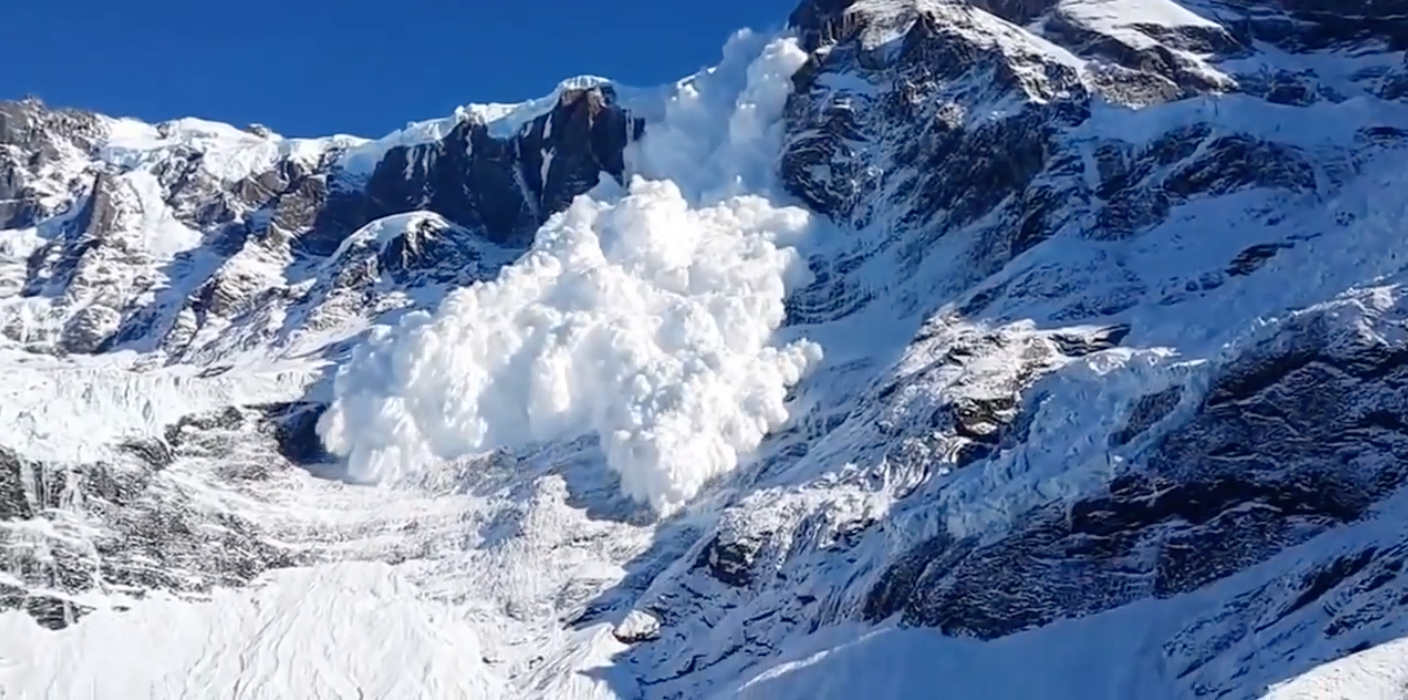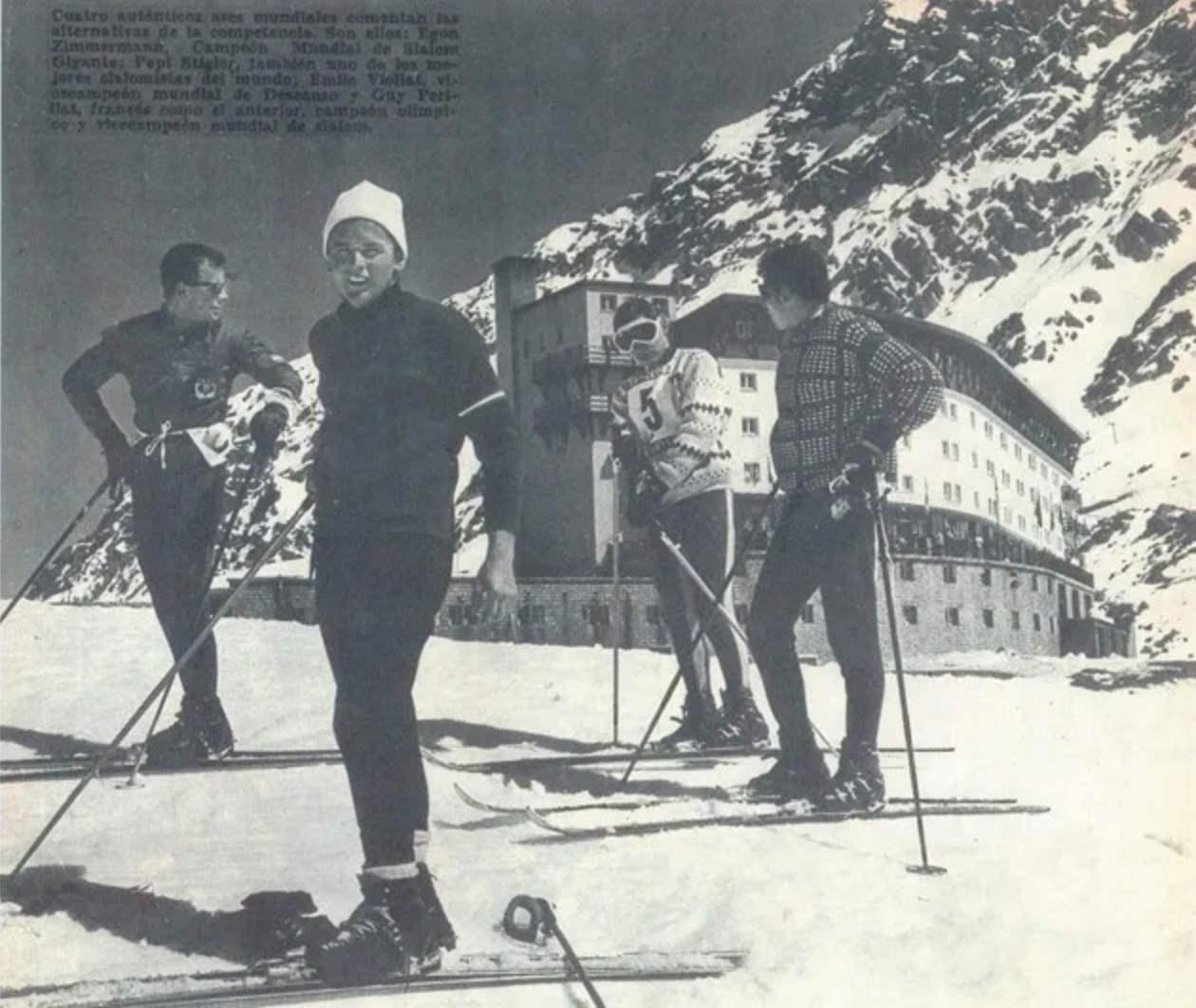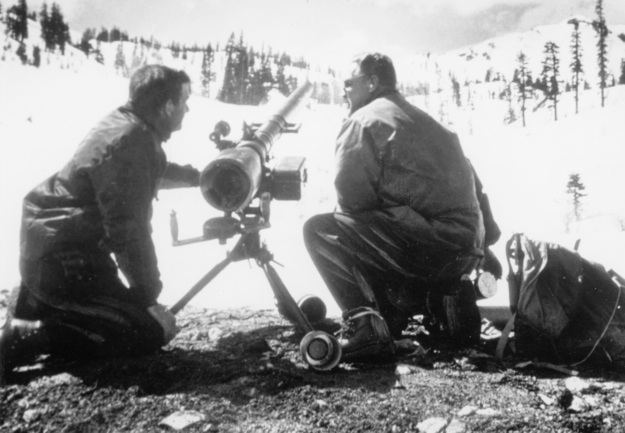
Every so often, Patagonia gets that storm. That storm which only rolls in once every century. That storm which drops hundreds of inches of snow in a matter of days, and halts the movement of entire regions of people. That storm which kills with murderous intent. In 1965, Chile got that storm.
Chile averages about twenty feet of snowfall in a winter. Between August ninth and August sixteenth, 1965, a storm that came in from the Pacific Ocean produced over twenty feet of snow and caused earth-swallowing avalanches that left entire communities completely incapacitated. The Hundred-Year Storm was so named by the weather people in Chile at the time because the combination of factors that it produced could hardly occur more often than once a century, according to Montgomery Atwater, American author of the informative 1968 nonfiction novel, The Avalanche Hunters.
Atwater witnessed this storm first hand in Chile. He writes that “not less than” twenty feet of snow fell during the storm because the observer Guillermo Ibañez, who had been measuring snowfall each day at the Rio Blanco mining outpost in Chile, reports that his study plot was wiped out by an avalanche on the sixth day of the storm.
At least fifty-six people died across Chile during the Hundred-Year Storm. This figure is possibly higher, as not everywhere in Chile was reporting avalanche deaths at that time, especially in remote, rural mountain communities. Atwater writes in The Avalanche Hunters:
“In an almost continuous stream, avalanches poured off the 18,000 to 20,000-foot peaks of the Andes. In the final paroxysm of the storm, one avalanche broke off at the top of the Speed Trial Run at Portillo. On this slope in 1963, two American boys, Dick Dorworth and C.B. Vaughn, had traveled faster than any man ever had before on skis, over a hundred miles per hour. The avalanche traveled faster. Its depth at the release point was thirty feet. It hit the Plateau lift and the ski patrol shelter a second blow. The destruction of the ski area was now complete. But this was not the last blow struck by the Hundred-Year Storm. That was reserved for Las Cuevas, a resort town on the opposite side of the Andes from Portillo. The last recorded avalanche of the storm smashed into Las Cuevas, killing fifty people.”

Portillo was virtually gone. Before the storm, the ski area had five lifts. After, it had zero. Only one lift tower in the entire resort was reported to still be standing by Atwater, who flew over the ski area in a helicopter to assess the damage. No casualties were reported at Portillo—but not everywhere was so lucky.
For the first five days of the storm at the Lagunitas mining camp, part of the Chilean outpost of Rio Blanco, professional avalanche hunter Guillermo Ibañez and his two assistants, hired to mitigate avalanche danger, had initially kept the damage at bay. They blasted avalanches with a recoilless rifle and kept the camp’s structures safe from the destructive force of the storm. There was even a break in the storm when Ibañez had reported that a tidbit of sunshine managed to sneak its way through the clouds and briefly shine on the camp. This restored morale and the men there felt a glimmer of hope. In storms like these, there often comes a moment when you begin to think, Maybe this one won’t stop. “Of course, it’s going to stop,” you say to yourself. “It always does.” “But what about this time?“
The men’s respite was short-lived. On the fifth night of the storm going into the sixth, it started snowing again—three inches an hour, according to one of Ibañez’s final radio calls. Around midnight he began blasting again with his recoilless rifle, where he could hear “a continuous rumble of slides down canyon,” Atwater wrote. Then Ibañez reported all stations secure and turned the radio off for the night. That was the last radio signal that went out from Lagunitas.

An hour and a half later an avalanche smashed into the camp’s powerhouse. Of the two operators on duty, one managed to dig himself out and sound the alarm. The other dove into his storm cellar under the big diesel engine, where rescuers eventually had to dig ten feet through the “jumble of snow, girders, and sheet iron to get him out.”
Over the next few hours, Ibañez and his assistants concentrated all of the camp’s men, over sixty of them, into the best-protected building in the camp. The men then worked to repair the camp’s generator, damaged by the avalanche, to win back power. They labored and fought through the camp’s wreckage and avalanche debris as best they could. The camp’s recoilless rifle, used by Ibañez and his crew to keep the avalanches from hitting them head-on, was gone—destroyed, buried or swept away by the avalanche that had hit the camp. In the final moments of the storm—only a few hours from its end—another avalanche struck the camp from the east side. It destroyed half of the camp’s mess hall and slammed it into a dormitory which the camp’s leaders had wisely evacuated. Twenty or so men were eating lunch in the mess hall when the avalanche slammed into it, but all were reported safe. Ibañez and his crew had saved the men’s lives by evacuating that dormitory. All were eventually rescued and got to go home.
The nearby Disputada mine did not have the same, happy-ending fate as those in Lagunitas. Six lost their lives to avalanches produced by the Hundred-Year Storm.
The damage done by Chile’s Hundred-Year Storm was incomprehensible. It cost the nation millions and millions of dollars, along with dozens of lives of its citizens. Had it not been for the heroic efforts of those like Guillermo Ibañez at Lagunitas, that figure surely would have been higher.
It’s going on sixty years since the Hundred-Year Storm had its way with Chile. A lot of progress has been made in avalanche research since then. Avalanche control is at an all-time best, with avalanche fatalities at an all-time low worldwide. The days when entire communities got swept away into the bellies of avalanches are few and far between, even though they occasionally do still happen. The progress made in avalanche research in the past several decades is something to be proud of. So maybe during Chile’s next Hundred-Year Storm, those poor souls currently residing in those living, breathing, cold-blooded Andes Mountains won’t be so helpless after all, and maybe, just maybe, after that storm settles they’ll still be there to make some damn deep turns.
This article serves in part as a review of the 1968 publication The Avalanche Hunters, by Montgomery Atwater.